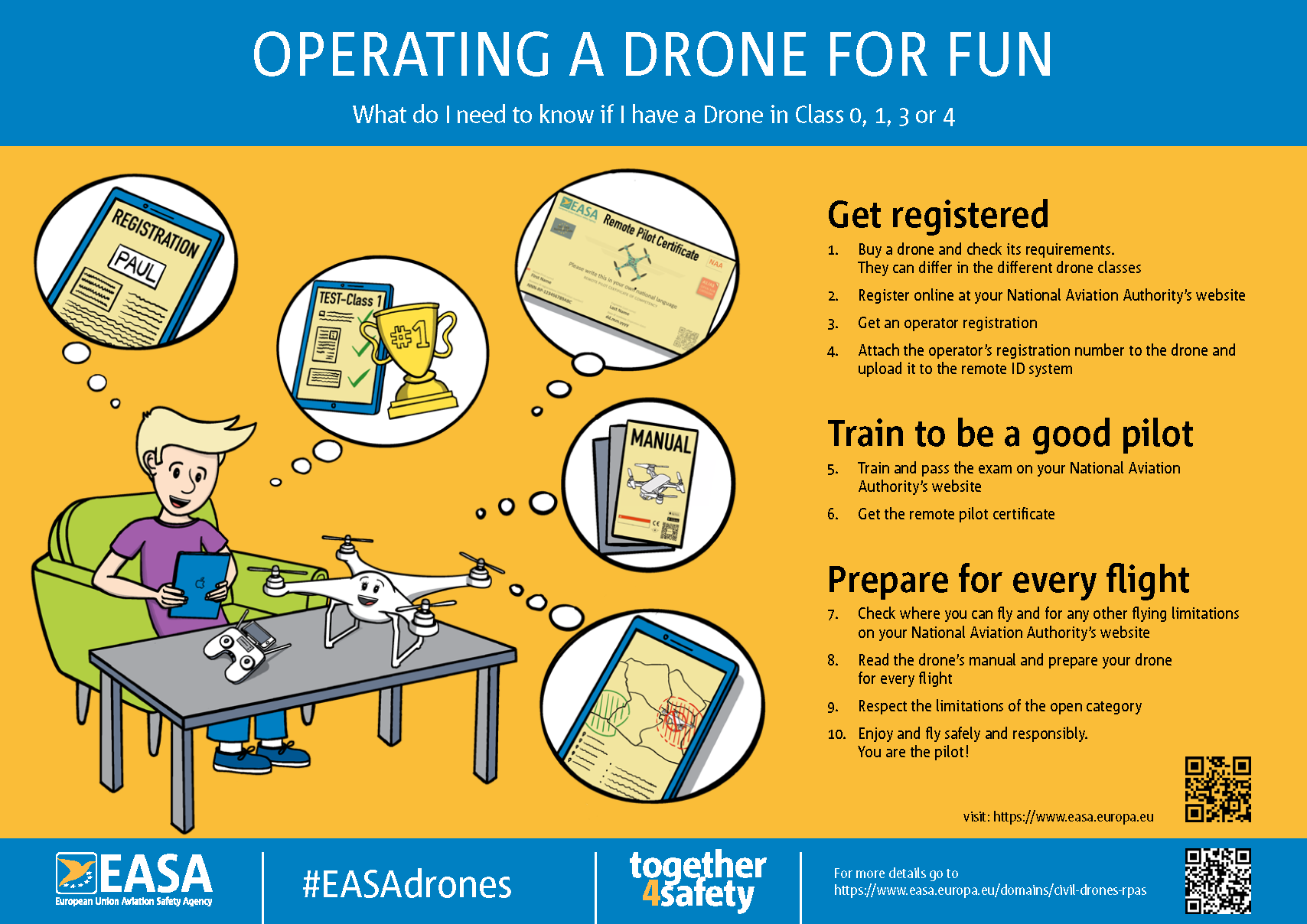EU Regulations 2019/947 and 2019/945 set out the framework for the safe operation of civil drones in the European skies. They adopt a risk-based approach, and as such, do not distinguish between leisure or commercial civil drone activities. What they consider is the weight and the specifications of the civil drone and the operation it is intended to conduct.
Regulation (EU) 2019/947, which is applicable since 31 December 2020 in all EU Member States, including Norway and Liechtenstein (it is expected that it will soon become applicable in Switzerland and Iceland too), caters for most types of civil drone operations and their levels of risk. It defines three categories of civil drone operations: the ‘open’, the ‘specific’ and the ‘certified’ category.
- The ‘open’ category addresses the lower-risk civil drone operations in , where safety is ensured provided the civil drone operator complies with the relevant requirements for its intended operation. This category is subdivided into three subcategories, namely A1, A2 and A3. Operational risks in the ‘open’ category are considered low and, therefore, no operational authorisation is required before starting a flight.
- The ‘specific’ category covers riskier civil drone operations, where safety is ensured by the drone operator by obtaining an operational authorisation from the national competent authority before starting the operation. To obtain the operational authorisation, the drone operator is required to conduct a risk assessment, which will determine the requirements necessary for the safe operation of the civil drone(s).
- In the ‘certified’ category, the safety risk is considerably high; therefore, the certification of the drone operator and its drone, as well as the licensing of the remote pilot(s), is always required to ensure safety.
The management of drone traffic will be ensured through the U-space: a set of services that will be deployed in airspace where heavier traffic is expected, such as in urban areas. The U-space Regulation establishes and harmonises the necessary requirements for manned and unmanned aircraft to operate safely in the U-space airspace, so as to prevent collisions between aircraft and to mitigate air and ground risks. The U-space regulatory framework will provide for safe aircraft operations in all areas and for all types of unmanned aircraft operations. The U-space Regulation was adopted in April 2021.
How to be compliant as from December 31, 2020?
 Starting from December 31, 2020, your first step you need to take as a drone operator is to register in the country where you live or where have your principal place of business.
Starting from December 31, 2020, your first step you need to take as a drone operator is to register in the country where you live or where have your principal place of business.
Please refer to the list of NAAs’ drone website references by country at 'Drones - National Aviation Authorities' for more details.
Do I need to register my drone?
What happens once I register?
Will my registration as operator be recognise throughout Europe?
The second step is to ensure that you are aware of the rules related to and the risk posed by the civil drone operation. The drone operator and the remote pilot may be two different persons: the drone operator is the person that is registered and is responsible for the operation (normally, it is the owner of the drone). The remote pilot is the person that actually controls the drone. The drone operator may also be the remote pilot, or they may employ one or more remote pilots. The remote pilot must have undergone the appropriate training for the operation to be conducted.
FAQs on Training requirement “open” category
FAQs on Training requirement “specific” category
You will also need to ensure that you have the appropriate insurance cover for your drone. We recommend you check with your NAA about the drone insurance requirements. Please refer to the Drones (UAS) FAQs section for further details.
Last but not least, check with your NAA the zones where drone operations are forbidden or those where you need to have a flight authorisation before entering them (UAS geographical zones). Report to your NAA any incident or accident you witness or are involved in, when it caused an injury to a person or when it involved an aircraft with a pilot aboard.